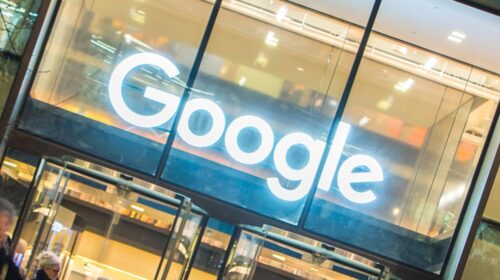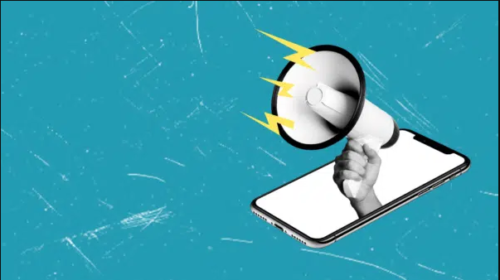Cybersecurity in SEO: How website security affects SEO performance
Website security — or lack thereof — can directly impact your SEO performance.
Search specialists can grow complacent. Marketers often get locked into a perception of what SEO is and begin to overlook what SEO should be.
The industry has long questioned the permanent impact a website hack can have on organic performance.
And many are beginning to question the role preventative security measures might play in Google’s evaluation of a given domain.
Thanks to the introduction of the GDPR and its accompanying regulations, questions of cybersecurity and data privacy have returned to the fray.
The debate rages on. What is the true cost of an attack? To what extent will site security affect my ranking?
The truth is, a lot of businesses have yet to grasp the importance of securing their digital assets. Until now, establishing on-site vulnerabilities has been considered a different skillset than SEO. But it shouldn’t be.
Being a leader – both in thought and search performance – is about being proactive and covering the bases your competition has not.
Website security is often neglected when discussing long-term digital marketing plans. But in reality, it could be the signal that sets you apart.
When was the last time cybersecurity was discussed during your SEO site audit or strategy meeting?
How does website security affect SEO?
HTTPS was named as a ranking factor and outwardly pushed in updates to the Chrome browser. Since then, HTTPS has, for the most part, become the ‘poster child’ of cybersecurity in SEO.
But as most of us know, security doesn’t stop at HTTPS. And HTTPS certainly does not mean you have a secure website.
Regardless of HTTPS certification, research shows that most websites will experience an average of 58 attacks per day. What’s more, as much as 61 percent of all internet traffic is automated — which means these attacks do not discriminate based on the size or popularity of the website in question.
No site is too small or too insignificant to attack. Unfortunately, these numbers are only rising. And attacks are becoming increasingly difficult to detect.
1. Blacklisting
If – or when – you’re targeted for an attack, direct financial loss is not the only cause for concern. A compromised website can distort SERPs and be subject to a range of manual penalties from Google.
That being said, search engines are blacklisting only a fraction of the total number of websites infected with malware.
GoDaddy’s recent report found that in 90 percent of cases, infected websites were not flagged at all.
This means the operator could be continually targeted without their knowledge – eventually increasing the severity of sanctions imposed.
Even without being blacklisted, a website’s rankings can still suffer from an attack. The addition of malware or spam to a website can only have a negative outcome.
It’s clear that those continuing to rely on outward-facing symptoms or warnings from Google might be overlooking malware that is affecting their visitors.
This creates a paradox. Being flagged or blacklisted for malware essentially terminates your website and obliterates your rankings, at least until the site is cleaned and the penalties are rescinded.
Not getting flagged when your site contains malware leads to greater susceptibility to hackers and stricter penalties.
Prevention is the only solution.
This is especially alarming considering that 9 percent, or as many as 1.7 million websites, have a major vulnerability that could allow for the deployment of malware.
If you’re invested in your long-term search visibility, operating in a highly competitive market, or heavily reliant on organic traffic, then vigilance in preventing a compromise is crucial.
2. Crawling errors
Bots will inevitably represent a significant portion of your website and application traffic.
But not all bots are benign. At least 19% of bots crawl websites for more nefarious purposes like content scraping, vulnerability identification, or data theft.
Even if their attempts are unsuccessful, constant attacks from automated software can prevent Googlebot from adequately crawling your site.
Malicious bots use the same bandwidth and server resources as a legitimate bot or normal visitor would.
However, if your server is subject to repetitive, automated tasks from multiple bots over a long period of time, it can begin to throttle your web traffic. In response, your server could potentially stop serving pages altogether.
If you notice strange 404 or 503 errors in Search Console for pages that aren’t missing at all, it’s possible Google tried crawling them but your server reported them as missing.
This kind of error can happen if your server is overextended
Though their activity is usually manageable, sometimes even legitimate bots can consume resources at an unsustainable rate. If you add lots of new content, aggressive crawling in an attempt to index it may strain your server.
Similarly, it’s possible that legitimate bots may encounter a fault in your website, triggering a resource intensive operation or an infinite loop.
To combat this, most sites use server-side caching to serve pre-built versions of their site rather than repeatedly generating the same page on every request, which is far more resource intensive. This has the added benefit of reducing load times for your real visitors, which Google will approve of.
Most major search engines also provide a way to control the rate at which their bots crawl your site, so as not to overwhelm your servers’ capabilities.
This does not control how often a bot will crawl your site, but the level of resources consumed when they do.
To optimize effectively, you must recognize the threat against you or your client’s specific business model.
Appreciate the need to build systems that can differentiate between bad bot traffic, good bot traffic, and human activity. Done poorly, you could reduce the effectiveness of your SEO, or even block valuable visitors from your services completely.
In the second section, we’ll cover more on identifying malicious bot traffic and how to best mitigate the problem.
3. SEO spam
Over 73% of hacked sites in GoDaddy’s study were attacked strictly for SEO spam purposes.
This could be an act of deliberate sabotage, or an indiscriminate attempt to scrape, deface, or capitalize upon an authoritative website.
Generally, malicious actors load sites with spam to discourage legitimate visits, turn them into link farms, and bait unsuspecting visitors with malware or phishing links.
In many cases, hackers take advantage of existing vulnerabilities and get administrative access using an SQL injection.
This type of targeted attack can be devastating. Your site will be overrun with spam and potentially blacklisted. Your customers will be manipulated. The reputation damages can be irreparable.
Other than blacklisting, there is no direct SEO penalty for website defacements. However, the way your website appears in the SERP changes. The final damages depend on the alterations made.
But it’s likely your website won’t be relevant for the queries it used to be, at least for a while.
Say an attacker gets access and implants a rogue process on your server that operates outside of the hosting directory.
They could potentially have unfettered backdoor access to the server and all of the content hosted therein, even after a file clean-up.
Using this, they could run and store thousands of files – including pirated content – on your server.
If this became popular, your server resources would be used mainly for delivering this content. This will massively reduce your site speed, not only losing the attention of your visitors, but potentially demoting your rankings.
Other SEO spam techniques include the use of scraper bots to steal and duplicate content, email addresses, and personal information. Whether you’re aware of this activity or not, your website could eventually be hit by penalties for duplicate content.
How to mitigate SEO risks by improving website security
Though the prospect of these attacks can be alarming, there are steps that website owners and agencies can take to protect themselves and their clients. Here, proactivity and training are key in protecting sites from successful attacks and safeguarding organic performance in the long-run.
1. Malicious bots
Unfortunately, most malicious bots do not follow standard protocols when it comes to web crawlers. This obviously makes them harder to deter. Ultimately, the solution is dependent on the type of bot you’re dealing with.
If you’re concerned about content scrapers, you can manually look at your backlinks or trackbacks to see what sites are using your links. If you find that your content has been posted without your permission on a spam site, file a DMCA-complaint with Google.
In general, your best defense is to identify the source of your malicious traffic and block access from these sources.
The traditional way of doing this is to routinely analyze your log files through a tool like AWStats. This produces a report listing every bot that has crawled your website, the bandwidth consumed, total number of hits, and more.
Normal bot bandwidth usage should not surpass a few megabytes per month.
If this doesn’t give you the data you need, you can always go through your site or server log files. Using this, specifically the ‘Source IP address’ and ‘User Agent’ data, you can easily distinguish bots from normal users.
Malicious bots might be more difficult to identify as they often mimic legitimate crawlers by using the same or similar User Agent.
If you’re suspicious, you can do a reverse DNS lookup on the source IP address to get the hostname of the bot in question.
The IP addresses of major search engine bots should resolve to recognizable host names like ‘*.googlebot.com’ or ‘*.search.msn.com’ for Bing.
Additionally, malicious bots tend to ignore the robots exclusion standard. If you have bots visiting pages that are supposed to be excluded, this indicates the bot might be malicious.





